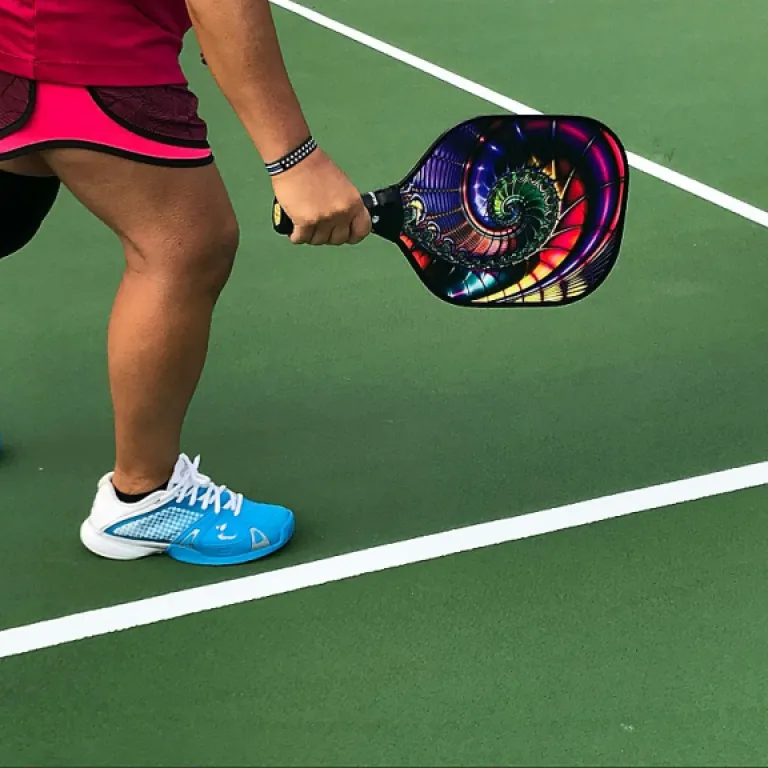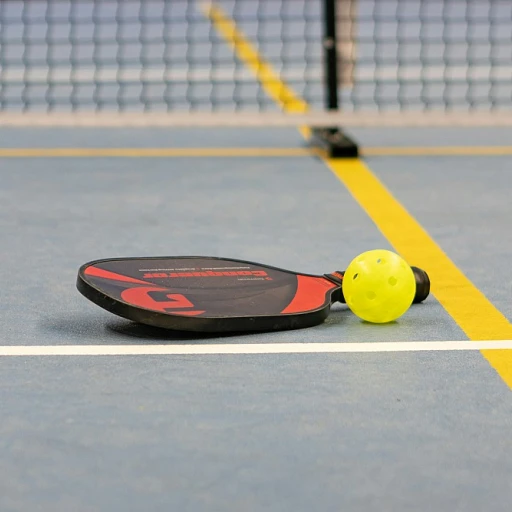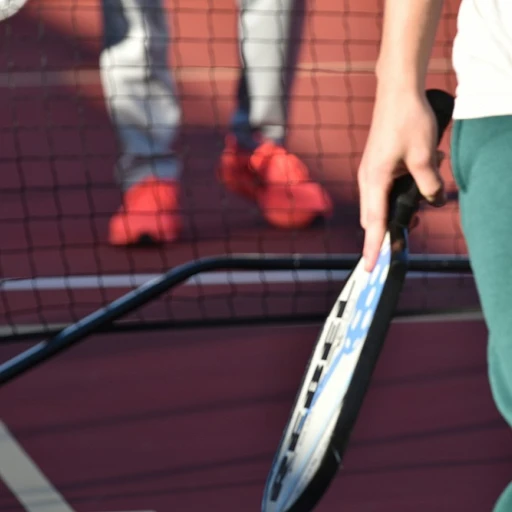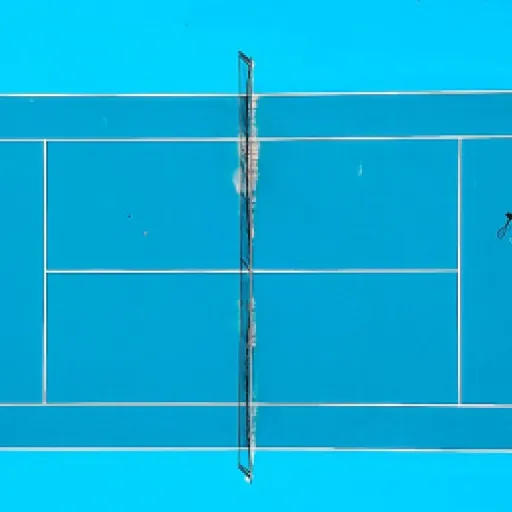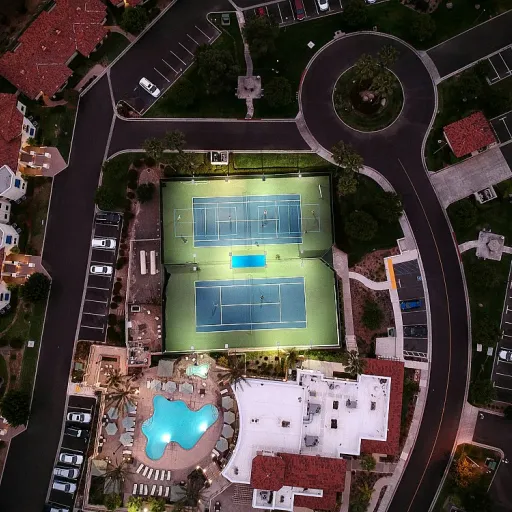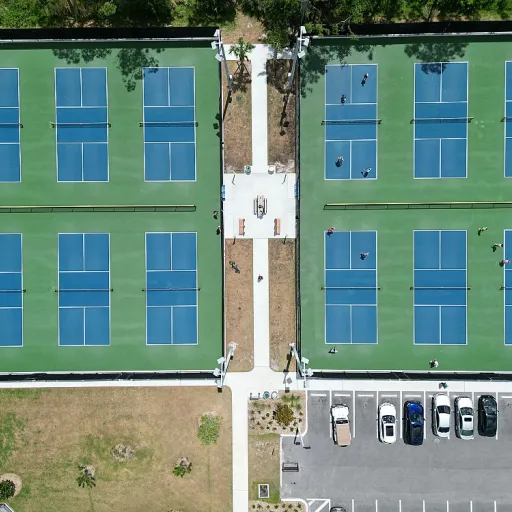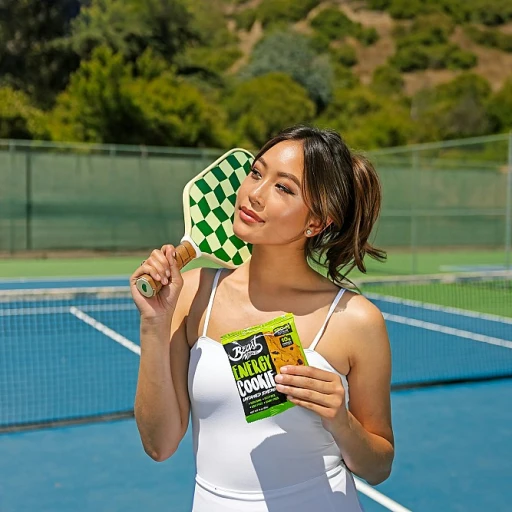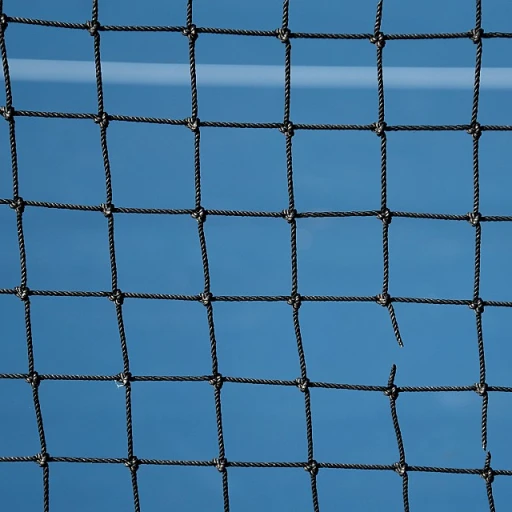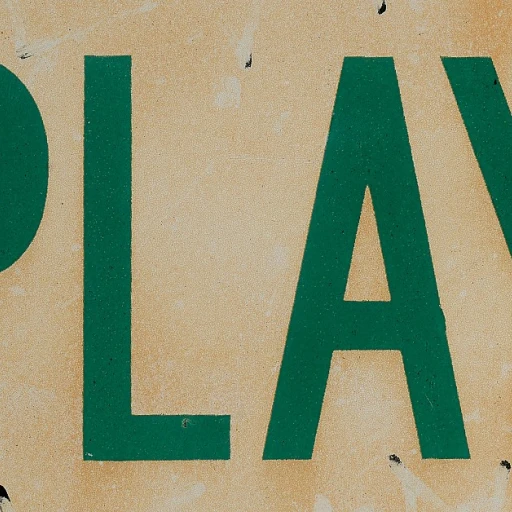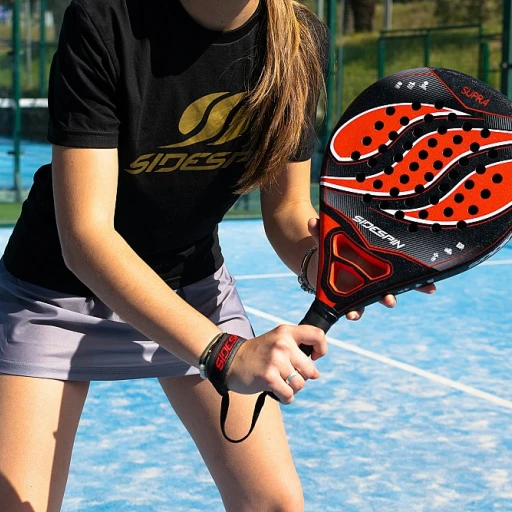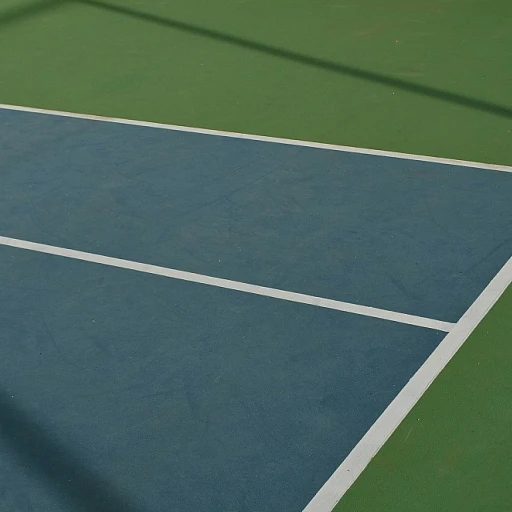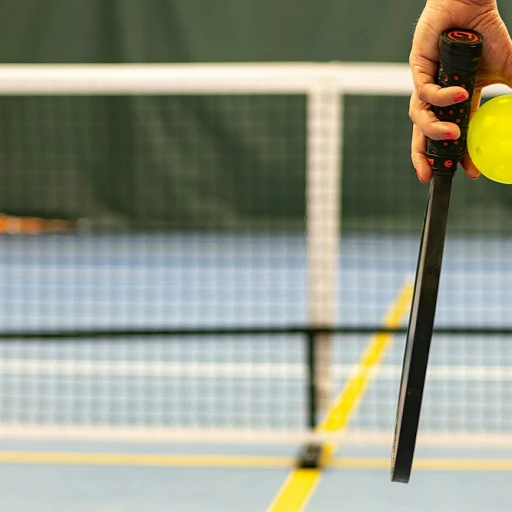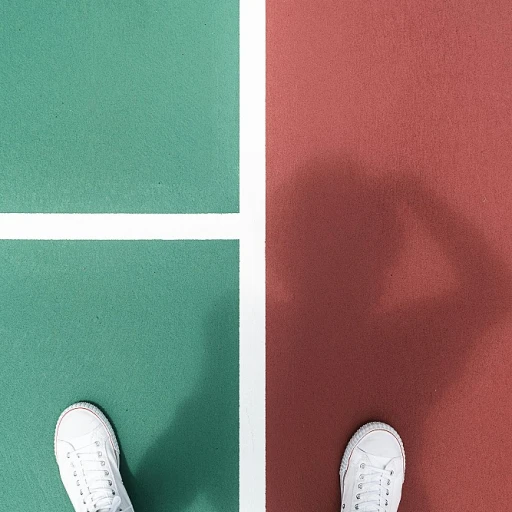
Understanding Pickleball Court Tape
Why Pickleball Court Tape is Essential
Pickleball court tape is a fundamental component for anyone serious about the game, helping to define the playing area with precision and clarity. Whether you are setting up a temporary pickleball court or enhancing an existing one, utilizing tape to mark boundary lines is a practical solution. It is especially valuable for courts that need adaptable configurations or if you are experimenting with new layouts before committing to a permanent design.
Players often find pickleball court tape to be a great option for testing the waters, literally and figuratively. Since pickleball games can be played on various surfaces, from gym floors to asphalt, the right tape ensures that lines remain visible even when the court is wet or exposed to elements like rain. The right tape can withstand a wet mop or varied weather conditions, allowing for consistent play without concern for fading or peeling.
Typically, pickleball court tapes range from two to three inches wide. This width provides optimal visibility without being obtrusive to players or distracting from the game. Additionally, using tape allows for easy adjustments and corrections, saving you the time and effort of repainting or re-marking with chalk.
Investing in quality tape may come with a cost, but it is often offset by its durability and the ability to save on reapplication costs over time. Evaluating the options for taping can be crucial, as different materials and adhesive qualities can impact performance. Choosing the right tape involves considering the specific needs of your play area, whether it is for heavy use or occasional games.
Overall, pickleball court tape is an essential tool that helps to complete the setup without a steep price, making it easier to dive into the game, paddle in hand, with lines clearly defining your court day by day.
Benefits of Using Court Tape
Advantages of Court Tape in Pickleball
Using pickleball court tape is a great option for players and facility managers who want to add flexibility to their playing surfaces without a hefty price tag. Whether you play on an exterior surface or indoors, here's why incorporating tape is a smart choice:- Versatility and Flexibility: Court tapes are a practical solution for setting temporary lines on any floor surface. Whether it's a wooden gymnasium or an outdoor court, these tapes allow you to create pickleball lines that suit different scenarios.
- Cost-Effectiveness: Compared to permanent court markings, tape offers a budget-friendly option. It allows users to test different configurations without committing long-term, making it suitable for both temporary pickleball setups and permanent courts.
- Weather-Resistance: Designed to withstand changing weather conditions, including rain, certain tapes ensure that your court's integrity is maintained over time. Most options are engineered to endure wet conditions, allowing you to play your favorite game, rain or shine.
- Easy Installation and Removal: One of the tape's best features is its ease of application and removal. It doesn't require specialized skills, and when it's time to change configurations, the removal process is hassle-free. Keep your paddle at the ready, as switching setups is as easy as a quick taping session!
Choosing the Right Tape for Your Court
Selecting the Best Pickleball Court Tape
Picking the right pickleball court tape is crucial to ensure optimal performance, durability, and ease of use. Whether you're setting up temporary pickleball lines or planning for a more permanent installation, you'll want to consider various factors to make an informed choice.- Durability: Look for tapes designed to withstand heavy foot traffic, inclement weather, and regular use. Some tapes are particularly robust, maintained well even when exposed to rain or frequent wet mopping.
- Application Surface: Some tapes adhere better to certain surfaces. For instance, court tapes made for gym floors or other indoor settings may not perform well outdoors. If your court is an exterior surface, opt for tapes specifically developed for outdoor use.
- Width and Visibility: Typically, tapes are a few inches wide. Ensure the tape color and width provide high visibility against the court's surface, which is essential during a game. It helps in maintaining clear and distinct pickleball lines.
- Temporary vs. Permanent: If you're considering a temporary pickleball setup, mild adhesive tapes are suitable as they are easy to remove without damaging the floor. Permanent setups would benefit from stronger adhesives.
- Reviews and Recommendations: Research and check trusted sources or forums for recommendations and reviews. A product renowned for quality like a tape great for both weather resistance and cohesiveness can be a reliable investment.
Installation Tips and Tricks
Mastering the Art of Taping Your Pickleball Court
Installing pickleball court tape can be a straightforward process if you follow some essential tips and tricks. Whether you're setting up temporary pickleball lines or opting for a more permanent solution, the right approach can make all the difference.
- Preparation is Key: Before you start, ensure the court surface is clean and dry. A wet mop can help remove any dust or debris that might prevent the tape from adhering properly. This step is crucial, especially if you're working on an exterior surface.
- Measure Twice, Tape Once: Accurate measurements are vital. Use a measuring tape to mark where the lines will go. Remember, pickleball lines are typically two inches wide. Mark these spots with chalk or a temporary marker to guide your placement.
- Choose the Right Day: Weather can impact the installation process. Avoid taping on a rainy day, as moisture can affect the tape's adhesion. A dry, mild day is ideal for ensuring the tape will stick properly.
- Apply with Care: When laying down the tape, start at one end and slowly unroll it, pressing firmly as you go. This method helps prevent air bubbles and ensures the tape withstands regular play. If you're using a cart to help with application, make sure it's set up correctly to avoid misalignment.
- Test Your Work: Once the tape is in place, test it by running a paddle over the lines to ensure they're secure. This step is particularly important if you've chosen options taping for temporary lines.
By following these tips, you can add cart your pickleball court with precision and confidence, enhancing your game without breaking the bank. Remember, the right tape can be a great option for both temporary and permanent setups, so choose options that suit your needs and budget.
Maintaining Your Court Tape
Preserving Your Pickleball Court's Tape
Maintaining your pickleball court's tape is crucial to ensure it lasts a long time and enhances your playing experience. Here are some practical tips:- Regular Cleaning: Clean the tape regularly to remove dirt and debris, which can be achieved using a soft wet mop. Regular maintenance will help preserve its visibility and grip.
- Avoid Harsh Chemicals: Use mild cleaning solutions as strong chemicals can damage the tape. A gentle cleaner or simple water is usually sufficient.
- Weather Conditions: Be mindful of the weather. Tape that is not designed to withstand rain may deteriorate faster under wet conditions. It's advisable to choose options taping that are specifically made for exterior surfaces and can endure different weather scenarios.
- Monitor Wear and Tear: Inspect the tape for any signs of wear and tear. Sections that are showing significant signs of degradation should be replaced promptly to prevent playability issues and safety hazards.
- Store Properly: If using temporary pickleball lines or tape that requires removal after play, ensure the tape is stored properly. This includes keeping it clean and safe from damp conditions to prevent mildew or adhesive breakdown.
- Re-application as Needed: Depending on the frequency of use and the type of pickleball court tape used, re-application might be necessary. Monitor the condition of the tape and reapply when needed to maintain visibility and consistency of the court lines.
Common Mistakes to Avoid
Steering Clear of Common Pitfalls
When it comes to setting up your pickleball court with tape, there are several common mistakes that can lead to frustration and additional costs. Being aware of these can help you maintain a pristine playing surface and ensure your pickleball lines remain intact.
- Choosing the Wrong Tape: Not all tapes are created equal. Opting for a tape that isn’t designed for the specific surface of your court can lead to peeling and poor performance. Ensure the tape you select is suitable for either temporary or permanent use, depending on your needs.
- Improper Surface Preparation: Before applying the tape, the court surface must be clean and dry. Using a wet mop to prepare the floor can help remove dust and debris, ensuring the tape adheres properly.
- Ignoring Weather Conditions: Weather plays a crucial role in the installation process. Applying tape on a wet or rainy day can compromise its adhesion. It’s best to choose a dry day for installation.
- Incorrect Tape Width: The standard width for pickleball lines is typically two inches wide. Using tape that is too narrow or too wide can affect gameplay and may not meet USA Pickleball standards.
- Overlooking Maintenance: Regularly check your tape for wear and tear. Temporary lines may need more frequent replacement, while permanent options should be inspected for durability.
By avoiding these common mistakes, you can ensure that your pickleball court remains in top condition, providing a great playing experience for all. Whether you're setting up a temporary pickleball court or looking for a more permanent solution, careful planning and execution will save you time and money in the long run.

